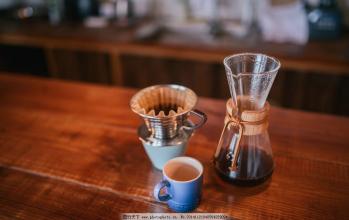Italian coffee machine powder distribution method which brand of Italian coffee machine principle
Italian coffee machine powder distribution method which brand of Italian coffee machine principle
How to judge whether it has achieved the effect of uniform distribution of powder? In addition to carefully performing the action of the cloth powder and careful observation, the production process can also provide some clues to determine whether the cloth powder affects the quality of the extraction and Espresso.
In general, the extraction time should be controlled at about 25 to 30 seconds, but sometimes it will be found that the outflow state of coffee will soon become unstable, a large jump, and the color will soon become very light. At this time, we can judge: there is a problem inside the pressed powder (there is a crack) or the less part of the coffee powder is overextracted due to the uneven pressing powder (and this may also be caused by the uneven distribution of the coffee powder) or it is the uneven distribution of the powder. so that the edge is not covered with coffee powder, causing water to flow directly through there. After the extraction is completed, take off the handle and observe the shape of the pressed powder. If there is no coffee powder on the edge, or the coffee powder is soaked, it is because of the uneven cloth powder that leads to the extraction failure. Then the next adjustment will start with the cloth powder.
The use of finger push is more suitable for double-head handles (that is, handles that can make two cups of Espresso at the same time) rather than single-head handles. Because the bottom of the double-headed powder bowl is a flat surface, it requires that the coffee powder should be evenly distributed so that each part of the coffee powder has the same thickness, which is convenient for the control of the pressing power and the overall uniformity. While the bottom of the single-headed powder bowl is not a plane, it is generally a two-step structure from the outer edge of the powder bowl to the center. This makes the central part of the coffee powder thicker than the edge part after the coffee powder finishes forming a plane on the surface, so that although the central part and the edge part are subjected to the same pressure, the compactness is not the same, which has a great impact on the future extraction. Therefore, at this time, it is required that after the coffee powder is evenly distributed, the surface should be slightly concave in the middle (so that the overall thickness of the coffee powder can be kept consistent), and then pressing the powder is easier to achieve a uniform and compact effect. Therefore, it is not suitable to pass by fingers, but it is more suitable to scrape off part of the coffee powder from the middle of the powder bowl to form a concave shape with the lid edge of the powder cartridge.
Cloth powder, in fact, after the coffee powder is ground, the coffee powder is manually put into the powder bowl and evenly distributed. The most important thing in this step is to be uniform. After putting the coffee powder into the powder bowl, the coffee powder will not be distributed evenly, but will be piled together, generally, there are more in the middle of the powder bowl, and some parts of the powder bowl are not covered by coffee powder. If there is no cloth powder, it will be evenly distributed. Then it is difficult to achieve uniform and dense powder pressing steps after that, and it is difficult to achieve perfect extraction.
So how to achieve uniform distribution of powder?
It's actually very simple. After putting the coffee powder into the powder bowl, first gently pat the edge of the powder bowl to make the coffee powder slide to the edge of the powder bowl to achieve the basic cover; then use the fingers or the powder bin lid to move the coffee powder from more places around so that the coffee powder is evenly distributed in the powder bowl.

Important Notice :
前街咖啡 FrontStreet Coffee has moved to new addredd:
FrontStreet Coffee Address: 315,Donghua East Road,GuangZhou
Tel:020 38364473
- Prev

Introduction to the method of grinding and calibration for flavor description of Arabica bean and Robesda bean
Arabica bean and Robesda bean flavor description grinding scale treatment method Arabica is deeply loved by Chinese people with a short history of coffee contact because of its strong fruity aroma. It was introduced to China by missionaries in the 19th century. It is widely planted in the dry-hot valley of the Jinsha River, which is more than 1000 meters above sea level in Panzhihua, Sichuan and western Yunnan.
- Next

The characteristics of hand-brewed coffee-what is hand-brewed coffee and Italian style
The characteristics of hand-brewed coffee-what is hand-brewed coffee and Italian 1. Prepare thermometers (there are thermometers on some hand pots, which is more convenient). To prepare a stopwatch, mobile phones usually have a timer function. 3. An electronic scale accurate to grams. 4. Filter cup, filter paper, sharing pot, hand punching pot. 5. The amount of coffee powder can be selected according to the ratio of coffee powder to coffee liquid at 1:13 (if it is coffee powder)
Related
- Beginners will see the "Coffee pull flower" guide!
- What is the difference between ice blog purified milk and ordinary milk coffee?
- Why is the Philippines the largest producer of crops in Liberia?
- For coffee extraction, should the fine powder be retained?
- How does extracted espresso fill pressed powder? How much strength does it take to press the powder?
- How to make jasmine cold extract coffee? Is the jasmine + latte good?
- Will this little toy really make the coffee taste better? How does Lily Drip affect coffee extraction?
- Will the action of slapping the filter cup also affect coffee extraction?
- What's the difference between powder-to-water ratio and powder-to-liquid ratio?
- What is the Ethiopian local species? What does it have to do with Heirloom native species?

